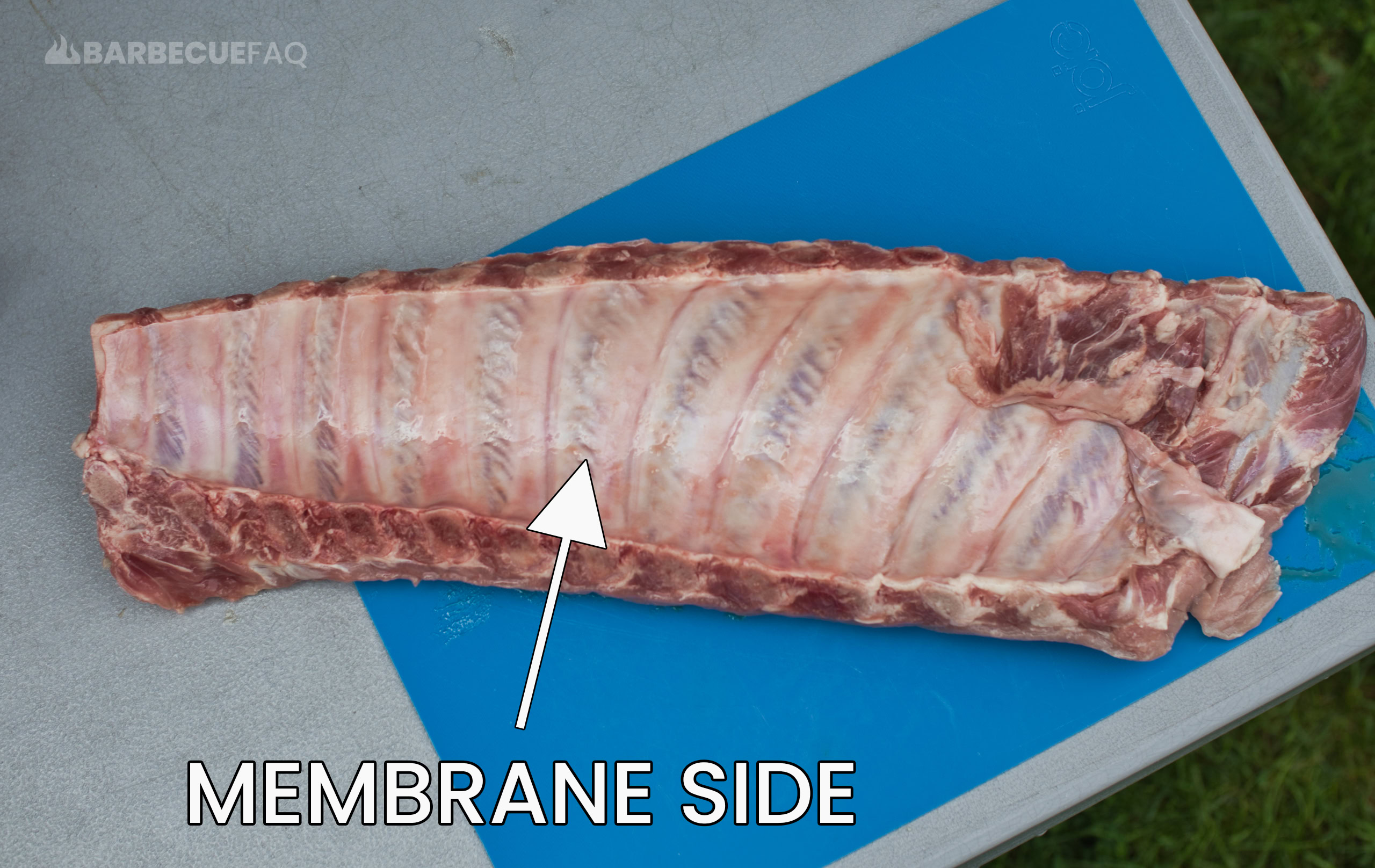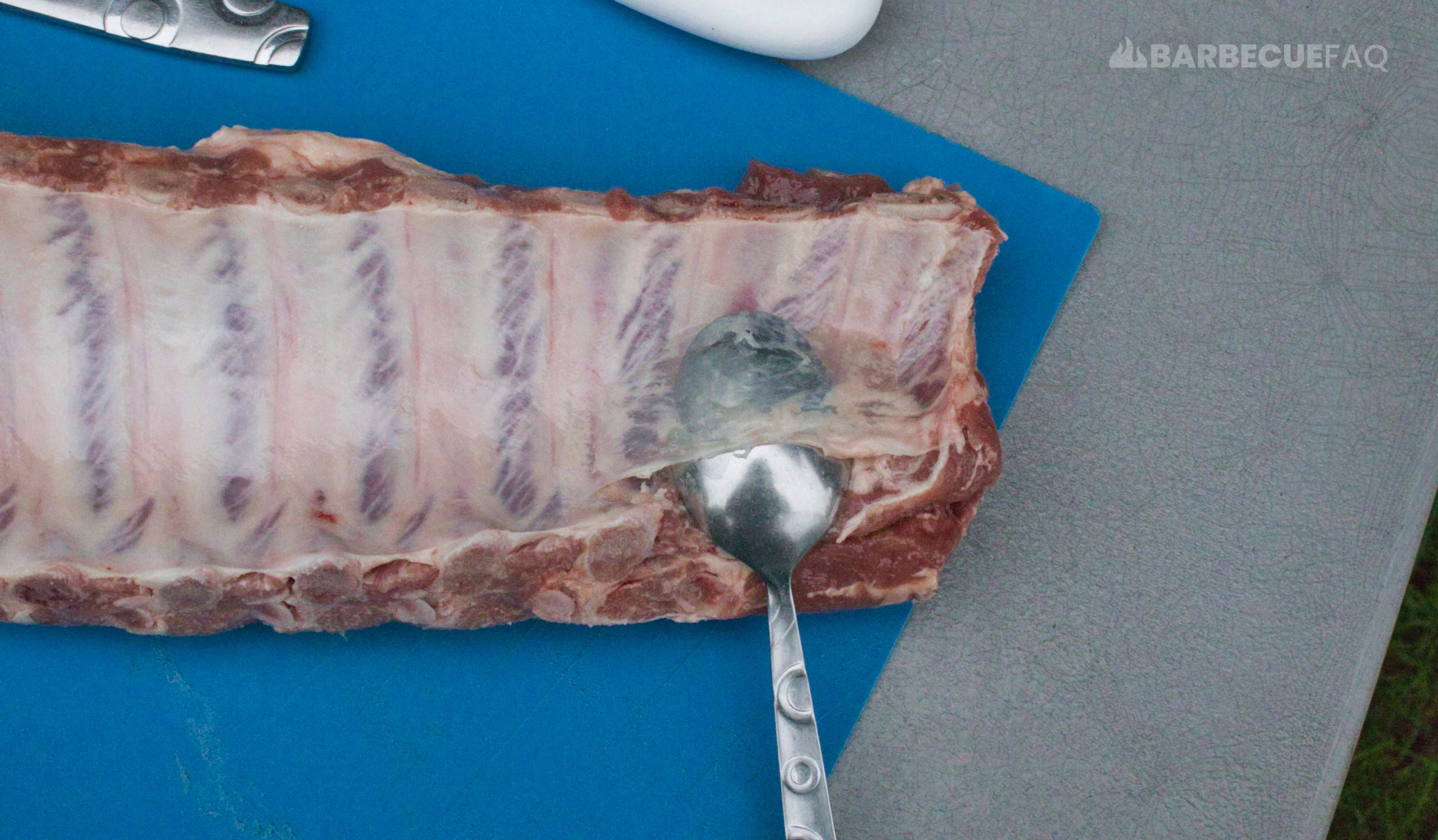By Dylan Clay
Almost all beginners are told to remove the membrane from the back of ribs before smoking/cooking them, however they all fail to qualify the “why.”
These sources will primarily state that the main reason for removing the membrane from the back of ribs is to allow for better penetration of smoke and dry rub (sugars, salts, etc), implying that it’s an impermeable layer; This is categorically untrue. It is to a lesser degree but not one that most people would notice.
Others even describe it as a “moisture” barrier that functions like a Texas crutch to lock in moisture; For the same reasons above, this isn’t true.
An almost tertiary reason – though it shouldn’t be – is the the mouth-feel or eating experience. The rib’s membrane is a protein layer of elastin that does not render when smoked and results in a chewy mouth-feel.
Depending on the types of ribs and how you smoke them, the membrane can also work to keep the ribs together/on the bone (more on that below).
The rib membrane or peritoneum is a serous membrane that lines the abdominal cavity.

The purpose of this membrane in mammals is to support and protect the organs of the abdomen; It also functions as a conduit for the passage of nerves, blood vessels, and lymphatics.
The silver skin is a thin membrane that works to separate and support muscles. When wet, this membrane appears shiny and silver.
As you can see below, the silver skin is silver in color.

The silver skin is a thin protein elastin and is essentially inedible; Unlike connective tissues and fats, it does not render/melt nor become tender.
Think about what happens to the meat/protein when you smoke it. Does the protein render? No.
The collagen denatures and dissolves, the fat renders into a gelatin, and the protein remains.
However, the protein shrinks as the meat fibers are squeezed and juices are pushed out. The same thing happens with this protein elastin.
Regardless of the species or animal and the type of rib you’re working with, removing the membrane from ribs follows the same steps.
What you need to remove rib membrane:

A big problem I have with how most resources is that they sort of recommend the same tool: a butter knife.
While I agree a butter knife is a wonderful tool for lifting, I’ve had so many instances where I cut through the membrane and it becomes even more difficult to remove.
Use a spoon instead!
1. The first thing I always do is pat-dry the ribs with a paper towel. This makes the surface less slippery and easier to work with.

2. Start by lifting the membrane with your butter knife.
The goal here isn’t to entirely get from one end to the other. Your goal is to lift the membrane just enough so that you can fit the teaspoon and your fingers under the lip you’ve created.

Then, using your fingers and the spoon to smoothly lift it.
While having a smooth removal is ideal and satisfying, it won’t always happen.
Truth be told, a piece of paper-towel will do most of the work. The paper-towel allows for grip as using your fingers makes it significantly harder; Granted, it’s still doable.
4. With the membrane slightly lifted, use your paper towel to pull it horizontally, across the ribs.
It may tear which is entirely okay, you’re not eating it anyway.

5. Discard the membrane in the trash.

That’s all there is to it.
Now you can continue with the rest of your rib preparation; Adding a binder like mustard or just simply dry brining with your mixture of salts, sugars, and spices.
If you’re more of a visual learner, my video below goes over the exact process outlined above, this time, with beef back ribs.
There is no difference in the rib membrane removal procedure for pork ribs and beef ribs.

However, the membrane of beef back ribs (in the video) is much thicker and in my opinion, easier to remove.
Pork’s rib membrane is much less substantial and is thinner. Pat drying the meat and using a paper towel definitely help to grip and rip it.
You can learn more about the differences between pork and beef ribs in this article.

Yes.
As I always say, barbecue is a centered experience and what I like, you may not. I personally don’t care for the rib membrane as it affects the mouth-feel, so I remove it.
The goal for most people is to smoke ribs until they’re probe tender (around 195 -205 F) – therefore lacking chewiness. Meaning, you’re going to get probe tender meat and then a layer of chewy-ish elastin.
However, for something like beef short plate ribs, it can help to physically keep the meat on the bone. For this reason, I typically leave it on beef ribs.
People that opt to leave the membrane on will tend to modify it by making cross-hatch cuts into it.
These cross-hatches will be more pronounced when the ribs are finished and you can remove it if necessary.
However, this is sort of the argument for not removing it; Beef ribs tend to shrink a lot.
There could be instances where the meat even entirely falls off the bone. Since the membrane is connected to the back of the bones and meat, it physically prevents the meat from entirely falling off the bone.
